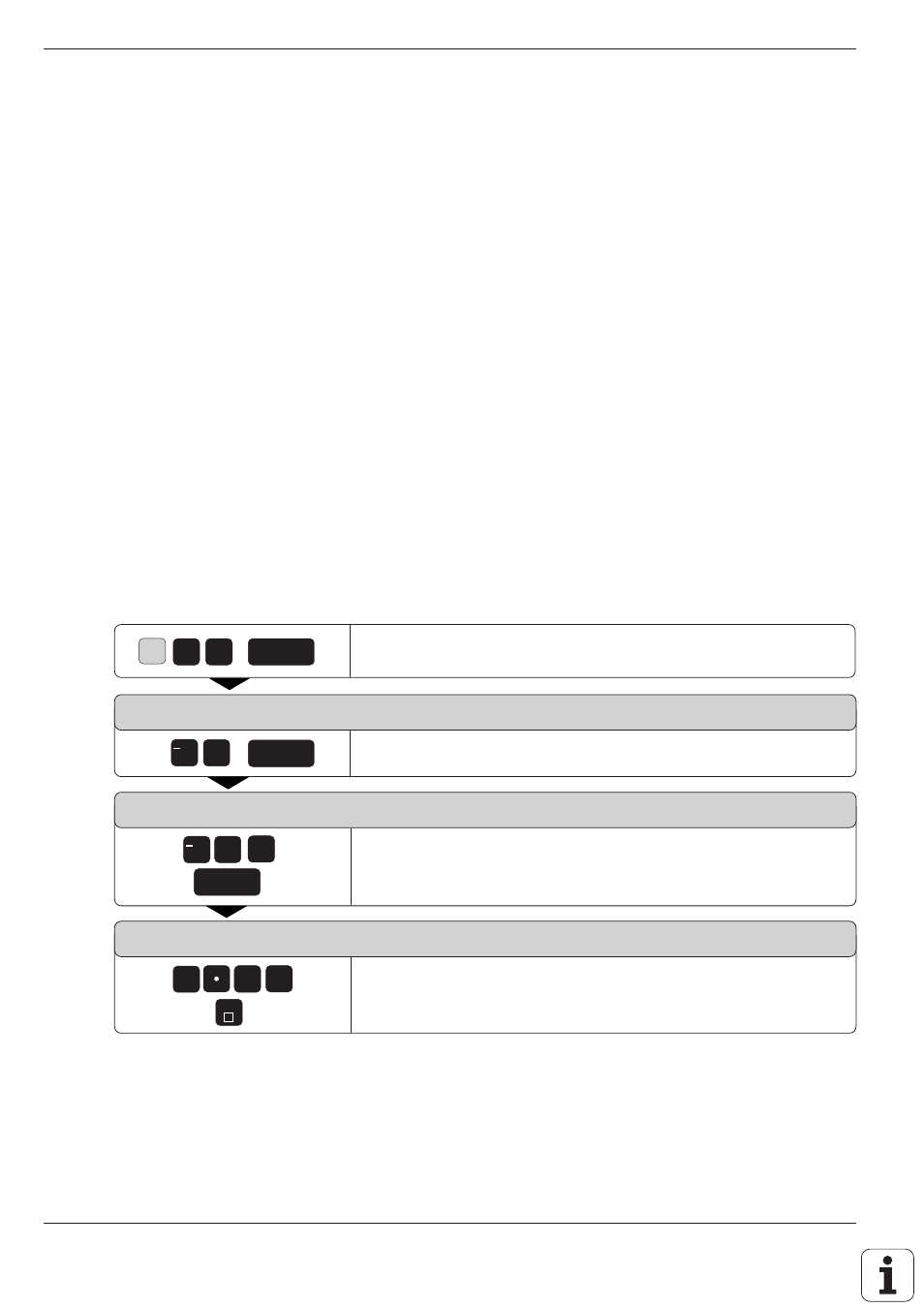General overview of cycles -2, Programming a cycle -2, 1 general overview of cycles – HEIDENHAIN TNC 407 (280 580) ISO Programming User Manual
Page 222

8-2
8
Cycles
TNC 426/TNC 425/TNC 415 B/TNC 407
ENT
5
8
G
ENT
+/
2
3
+/
ENT
0
0
7
5
END
Resulting NC block: G85 P01 –2 P02 –30 P03 +0.75 *
8.1 General Overview of Cycles
Frequently recurring machining sequences that comprise several working
steps are stored in the control memory as standard cycles. Coordinate
transformations and other special functions are also provided as standard
cycles.
These cycles are grouped into the following types:
• Simple fixed cycles such as pecking and tapping, as well as the milling
operations slot milling, rectangular pocket milling and circular pocket
milling.
• SL (Subcontour List) Cycles, group I. These allow machining of
relatively complex contours composed of several overlapping subcon-
tours.
• SL Cycles, group II, for contour-oriented machining. During rough-out
• Coordinate transformation cycles. These enable datum shifts,
rotation, mirroring, enlarging and reducing for various contours.
• Special cycles such as dwell time, program call, and oriented spindle
Programming a cycle
Defining a cycle
Enter the G function for the desired cycle and program it in the dialog. The
following example illustrates how cycles are defined:
Select a cycle, such as Rigid Tapping.
SETUP CLEARANCE ?
Enter the setup clearance (here, –2 mm).
TOTAL HOLE DEPTH ?
Enter the total hole depth (here, –30 mm).
THREAD PITCH ?
Enter the thread pitch (here, +0.75 mm).
